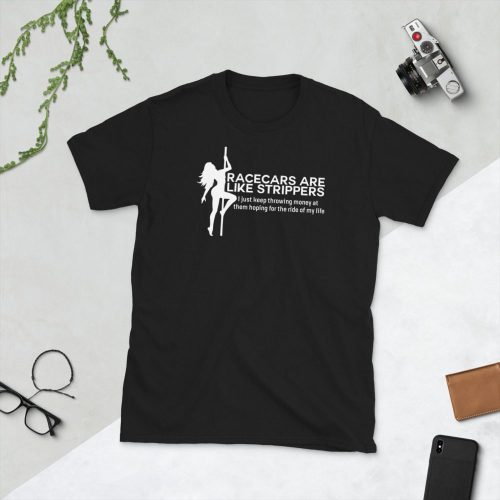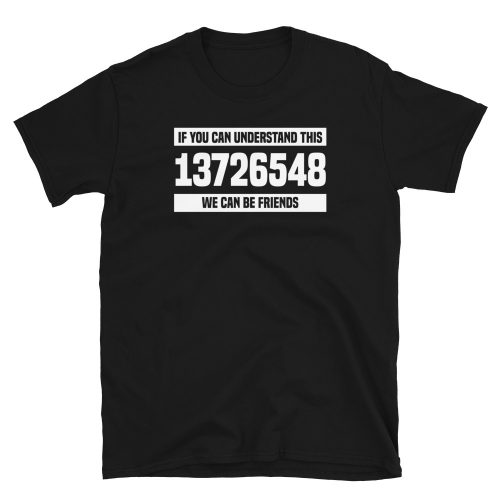Tires don’t just help your car drive along the road. They are constantly in motion vibrating with every bump in the road. Do tires affect ride quality? Yes, tires affect ride quality. Depending on the type of tire you have on your car your ride can be smooth or bumpy.
Factors in tires that determine ride quality
Tire Compound
Tires are made up of over 200 different ingredients. Each of these ingredients falls into a group. The groups are Natural rubber, Synthetic Rubber, Carbon black silica, Metallic and textile reinforcement cables, and Numerous chemical agents.
Depending on how the tire manufacturer decided the ratio of the ingredients your ride quality can vary. A softer compound will produce a softer ride. Although you will be sacrificing some handling. While a stiffer compound will give you better handling but you may feel every bump in the road.
What tire compound is best for you?
If you have an everyday commute and don’t want to drive a car with tires that make your teeth chatter you’d be better to go for a softer compound. Most people don’t do spirited driving so there isn’t really a need for stiffer tires. On the other hand, if you have a sports car and like putting the pedal to the metal then you might want some stiffer tires. you normally get a higher speed rating with stiffer tires. In addition, you also get better handling around the corners.
Now if you are a drag racer you’d think that stiffer tires would be the go-to. Actually, drag racing cars would do better with a softer compound. Having a softer compound will help you get a better grip and get off the line faster.
Depending on your tire of ride you should determine if you want a smooth or sharp (handling) ride.
Do tires affect ride quality? Yes, they do! Depending on factors like the sidewall, tire compound and other variables tires can definitely affect how your ride feels on the road. By purchasing the best tires you can have a soft or a better handling ride.

Tire Sidewall
When tires were first created they had large sidewalls. Sidewalls are the part of the tire that goes from the rim of the wheel to the tread. Depending on the size of the sidewall you can have a stiff or smooth ride. The large sidewalls on old cars provided a smooth ride. You could hit potholes and barely feel a bump.
Although as cars began to go faster handling became an important part. With larger sidewalls, the tires could roll which was terrible for handling. You would be sliding all of the place. After the research was done they starting creating tires will smaller or even low profile sidewalls.
-
Product on sale
 It’s in my dna car shirt, Car T Shirt for Men, Car Guy Gift Tee, Car Enthusiast, Petrolhead Gift, Car Gifts for MenOriginal price was: $24.99.$15.99Current price is: $15.99.
It’s in my dna car shirt, Car T Shirt for Men, Car Guy Gift Tee, Car Enthusiast, Petrolhead Gift, Car Gifts for MenOriginal price was: $24.99.$15.99Current price is: $15.99. -
 No one ever got sick from smoking tires Car Tshirt for Men, Car Guy Gift Tee, Car Enthusiast, Petrolhead Gift, Car Gifts for Men$15.99
No one ever got sick from smoking tires Car Tshirt for Men, Car Guy Gift Tee, Car Enthusiast, Petrolhead Gift, Car Gifts for Men$15.99 -
Product on sale
 Merry Boostmas, Car Guy Turbo Ugly Christmas Sweater, Car Sweater for MenOriginal price was: $39.99.$24.99Current price is: $24.99.
Merry Boostmas, Car Guy Turbo Ugly Christmas Sweater, Car Sweater for MenOriginal price was: $39.99.$24.99Current price is: $24.99. -
 Race cars are like strippers, Car Tshirt for Men, Car Guy Gift Tee, Car Enthusiast, Petrolhead Gift, Car Gifts for Men$15.99
Race cars are like strippers, Car Tshirt for Men, Car Guy Gift Tee, Car Enthusiast, Petrolhead Gift, Car Gifts for Men$15.99 -
Product on sale
 Race car things Car Tshirt for Men, Car Guy Gift Tee, Car Enthusiast, Petrolhead Gift, Car Gifts for MenOriginal price was: $24.99.$15.99Current price is: $15.99.
Race car things Car Tshirt for Men, Car Guy Gift Tee, Car Enthusiast, Petrolhead Gift, Car Gifts for MenOriginal price was: $24.99.$15.99Current price is: $15.99. -
 If you can understand this 13726548 we can be friends Car Tshirt for Men, Car Guy Gift Tee, Car Enthusiast, Petrolhead Gift, Car Gifts for Men$15.99
If you can understand this 13726548 we can be friends Car Tshirt for Men, Car Guy Gift Tee, Car Enthusiast, Petrolhead Gift, Car Gifts for Men$15.99 -
 I love one woman and several cars, Car Tshirt for Men, Car Guy Gift Tee, Car Enthusiast, Petrolhead Gift, Car Gifts for Men$15.99
I love one woman and several cars, Car Tshirt for Men, Car Guy Gift Tee, Car Enthusiast, Petrolhead Gift, Car Gifts for Men$15.99 -
 No My car isn’t done yet, Car Tshirt for Men, Car Guy Gift Tee, Car Enthusiast, Petrolhead Gift, Car Gifts for Men$15.99
No My car isn’t done yet, Car Tshirt for Men, Car Guy Gift Tee, Car Enthusiast, Petrolhead Gift, Car Gifts for Men$15.99 -
 Let me play you the song of my people, camshaft, Car T Shirt for Men, Car Guy$15.99 – $24.99
Let me play you the song of my people, camshaft, Car T Shirt for Men, Car Guy$15.99 – $24.99
How do you figure out the sidewall size of your tire?
When you look at the numbers on a tire you can see what the sidewall height is. 215-35-16 is typically what you’d see on a passenger tire. The 215 is the tire width in millimeters. The 35 is the sidewall height in millimeters. The 16 is the size of the wheel the tire can be mounted on.
The higher the number for the sidewall the better the tire is at absorbing impacts. Anything lower than a 35 is considered a low-profile tire. While low-profile tires usually provide great handling it comes at a cost. It’s much easier to get a bent rim when you hit a pothole. This is because there isn’t much sidewall to absorb the impact. The force ends up hitting your wheel which can bend your rim.
Depending on the type of ride quality you want you’ll either want to get a larger or a smaller sidewall. Car engineers have designed their vehicles to perform well with a specific tire size. That means you should probably mount tires that are listed in your owner’s manual. While you can opt for a larger sidewall it may through off your car’s suspension.

Balancing
Believe it or not something as simple as having a balanced tire can affect your ride quality. The weight of a tire is never 100% uniform. This means that you typically have low and high spots of weight. If you don’t get your tires balanced you will feel that weight difference as you drive.
When a tire is balanced weights are placed on the wheel. They help counteract the weight difference and give you a smoother ride quality. Even if you have older tires you can still get a tire balanced.
Wear
Tire wear can affect ride quality. If your wheels are out of alignment you can have excessive wear on the tire. If the tire is worn in a particular area it can throw off the balance of a tire. Not only that but you can get high or low spots which can affect how your vehicle rides.
Air pressure
Some automobile owners tend to forget to check their air pressure. Low air pressure can cause a bumpy ride. If your tires are too low in pressure it can also cause your tires to wear unevenly. This will absolutely affect your ride quality.
Having the pressure too high can also have negative effects. With high pressure on a tire the center of the tire tends to become more worn. With this worn area, you can have an unbalanced and uneven tire. This is why it’s best to have your tires checked each time you go in for service. Your mechanic may catch the issue early on and may be able to prevent it from getting too bad.

Suspension
Together with your tires your suspension can affect your ride quality. If you have a sports car you might have a stiffer suspension in comparison to a standard passenger car. With the stiffer suspension you will feel more bumps in the road.
You can typically improve the ride quality of your car by purchasing tires with a higher sidewall. Although you may be sacrificing handling. If you opt for stiffer tires and your car has a stiff suspension your ride quality may not be as smooth. You’ll probably be able to maneuver quickly but you may feel every bump in the road.
It’s best to go for a tire in the middle. Something that doesn’t have too high of a sidewall but provides enough comfort and handling. Unless you take your car to the track you may be ok with getting a standard tire.
Narrower Tire
Narrow tires can improve your car’s ride quality. With a narrow tire there is less area of the tread is touching the ground. The less area you have you decrease the number of obstacles your tire can come in contact with. With downside with this is that you may have less grip.
With a wider tire you get more grip. Especially when there is rain a wider tire has more channels for the water to escape. A wider tire will provide a better grip experience but you may feel more vibrations.

Hash marks
The hash marks typically refer to the type of tread pattern. With certain tread patterns you can get a better or worse ride quality. Some tires are made to work during the winter season. They provide excellent grip when it’s cold and snowy outside.
Winter tires usually have a certain type of hash marks in their tread. The tires are built to grip the snow. While this is great in the winter it doesn’t always provide the best experience in the summer. Your winter tires may be louder and they may drecrease your ride quality.
Based on when you drive your car you will want to research which tread pattern will work best for you. Usually tires with uniform tread blocks provide a smooth ride. With every tire there are always positives and negatives. So with a smooth-riding tire it may not be best in the snow.
Pros of a larger sidewall
- Better at absorbing impacts
- Smoother ride
- Usually cheaper
- Slower speed rating
Cons of a larger sidewall
- Less handling
- Lower speed ratings (on some tires)

Pros of a shorter sidewall
- Better handling
- Higher speed ratings (on some tires)
Cons of a shorter sidewall
- Leaves a lot of space in your wheel well
- Doesn’t absorb impacts well
Do tires affect ride quality?
Yes, depending on what tires you choose to put on your car you can have a better or worse ride quality. Choosing the right tire can give you the type of ride you want. You can use a Tirerack.com to find the perfect tire for your car.
Tirerack.com has thousands of tire reviews to help you choose the best tire for your car. You can enter your year, make, and model and their tire tool will show you a list of tires that works for your car. They can even set you up with an installer and tire insurance.
